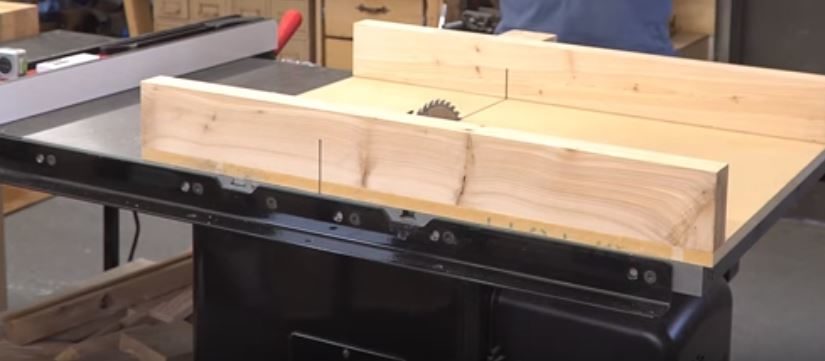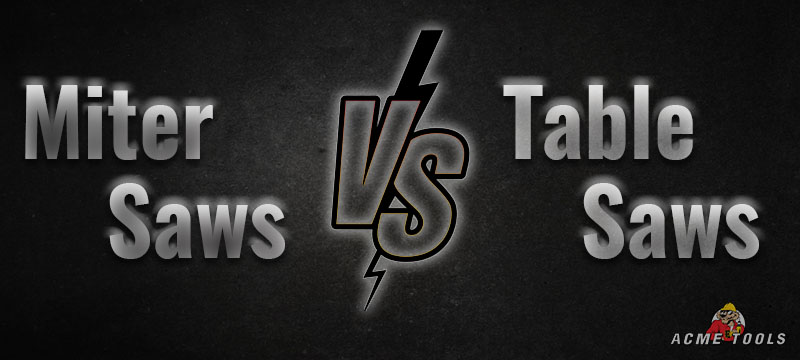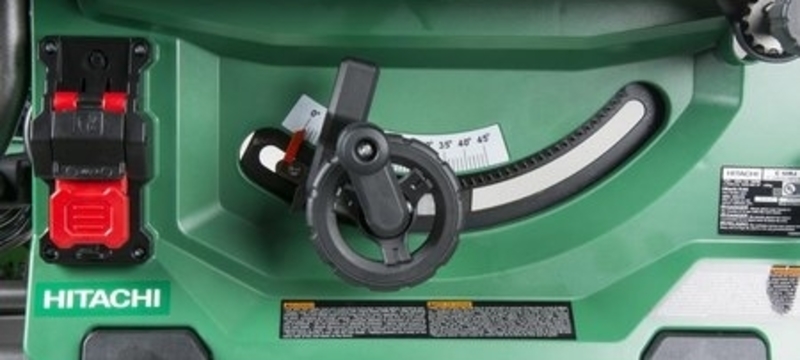Making a Table Saw Miter Sled With Gunflint Designs
I made a crosscut sled a little while back and shared my thoughts on using the right materials to make stable runners for shop-built jigs. I knew I would also be making a miter sled at that time, so I cut an extra runner for this project. Here is a link to that project if you want to jump back and familiarize yourself with making runners: How-To Make a Table Saw Crosscut Sled.
With that formality out of the way, let us build a precise miter sled.
Let’s Get Started!
I put a few washers in the miter slots to hold the plastic runners up just above the table saw’s surface. I then laid both plastic runners in place.

Besides the runners, the only material in this project is some ¾ inch MDF. I cut an 18-inch section off a full sheet, then cut that again at 30 inches. The big piece makes up the sled’s base, and the leftover piece is turned into the fence. These dimensions are arbitrary – you can modify this to make a sled any size you want; I just thought this would cover most of the things I needed.
Secure Your Workpiece
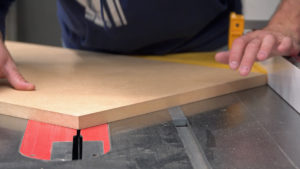
I clamped a large speed square to the table saw fence to help line up the sled’s base. It is not essential to the function of the sled to have the base precise, but it goes a long way toward making the miter fence precise when we get to that step later. I nudged the table saw fence over until the point of the base was in line with the saw blade, then locked it down.
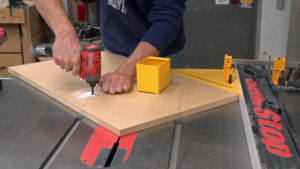
With everything lined up, I used a countersink bit to drill pilot holes through the base and into the runners. Then I drove in several screws to lock the runners in place. I used a flush trim saw to trim the runners even with the edge of the base. This is not precisely necessary; it looks better.
Making the Fence
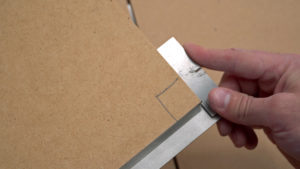
At this point, I am moving on to the fence. I want to point out that this technique for making a fence is not an original idea on my part. I got the idea from William Ng’s video: “Two cuts to a “Perfect” miter sled. I’ll outline the steps here briefly, but if you want to see William’s detailed explanation, check out this link.
I used my crosscut sled to make one perfect 90-degree corner. Then, I set my table saw fence to fifteen inches and cut the two opposite edges down to size. This left me with a perfect square.

Next, I set my fence to three inches and cut most of the way along one side. Then, I flipped the board over and did the same thing to the perpendicular edge. I moved over to the bandsaw to finish the cuts and was left with an L-shaped piece with a perfect 90-degree point.
A Solid Base for the Project

Back at the sled base, I drew a reference line perpendicular to the saw blade. Then I lined up a scrap piece that had a perfectly straight edge and screwed one side down. I grabbed my giant square and referenced it off the table saw fence, then pivoted the scrap piece and screwed down the other end once it was perfectly square.
I put the back points of the miter fence up against the scrap piece and lined the front end up with the leading point of the base. Next, I screwed the wall to the base temporarily, knowing that I would be fine-tuning it in a minute.

I made a test piece with a perfect 90-degree corner, and then I cut that corner off and carefully labeled all the essential components. The next step involves measuring both sides of my new triangle, which tells me exactly how far my fence was from perfect.
You Need to Use Math in Woodworking. Who Knew?
Over the short length of this little triangle, the difference between the two sides is only .005. This tells me that I did an excellent job lining everything up from the start, and in many cases, this would be good enough. I decided to challenge myself and strive for an even more minor error, so I used William’s formula to figure out precisely how far I needed to move my fence for it to be perfect. After a bit of struggling, I got mine precisely right.
Testing the New Sled

I made a little test frame to see how well it worked, and man, those miter joints are far superior to anything I have achieved up until now. So, I put a few more screws in the fence to lock it in place for good.
Ready to Use!
The sled could be ready for use now, but I will make more improvements. I styled the base this way because I wanted one long side that would allow me to attach stop blocks temporarily. This way, I could cut exact repeatable lengths up to thirty inches. However, leaving the base as this massive rectangle causes a problem – the whole sled is very heavy back and wants to tip off the side of the table saw. Most of the base is now just unnecessary real estate that ends up being a bunch of dead weight, so I used a jigsaw to cut away all the fat that is not essential to the function of the sled.

Lastly, I used some remnants of a length of sandpaper from my drum sander to glue down to the base. This way, workpieces have something to grip on instead of trying to slide around on the bare MDF surface.
Final Thoughts
This miter sled is now complete. There are certainly more bells and whistles that could be added to it, and after using it for a while, I will decide if I need any of them. I can say without a doubt that this sled is easier to use and gives me much better results than any miter sled I have used. I feel excited about making picture frames again because I know that my corners will line up perfectly from now on.
Mark Chryst of Gunflint Designs created Video and Blog posts in partnership with Acme Tools. Check out more of Mark’s work on his blog or his website at Gunflint Designs.
Did you find this building helpful? Are you interested in other buildings like this? Follow our blog for the latest tools news, DIY builds, and other fantastic tool information. Are you looking for a new saw as well? Check out our Top Table Saws of 2018 to find the best one for your shop or garage.


